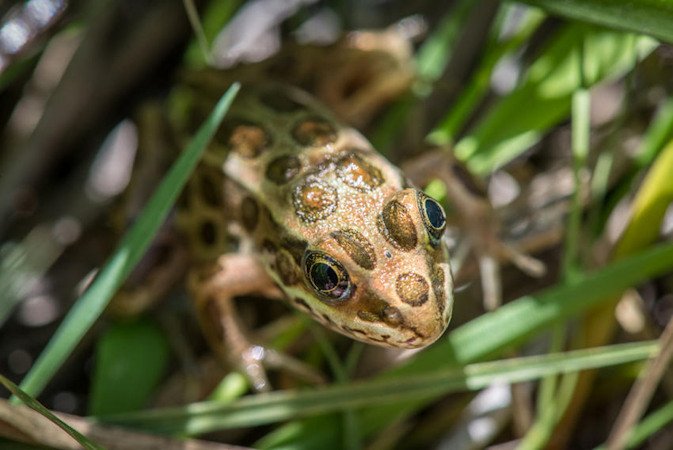Endangered frogs, reared at Oregon Zoo, hop back into the wild in recovery effort

PORTLAND, Ore. (KTVZ) -- Hundreds of northern leopard frogs, froglets and tadpoles reared at the Oregon Zoo are hopping back into the wild this month, thanks to a collaborative effort to save one of the last remaining Northwest populations of this endangered species.
The release included 259 tadpoles and 156 froglets, which hatched from eggs collected by the Washington Department of Fish and Wildlife earlier this year. The tiny frogs spent the spring and summer growing in a protected area at the zoo before being released into the Columbia National Wildlife Refuge earlier this month.
“We care for the eggs, and then the tadpoles once they hatch,” said Jennifer Osburn Eliot, who oversees the zoo’s frog-rearing efforts. “Young frogs have a much better chance at surviving in the wild.”
The recovery effort is made possible by a partnership with the Washington Department of Fish and Wildlife, U.S. Fish and Wildlife Service, Washington State University and Northwest Trek Wildlife Park.
Once abundant throughout North America, northern leopard frogs are rapidly disappearing from their native ranges in Washington, Oregon and western Canada. In Washington, where the zoo-reared froglets were released, the species has been listed as endangered since 1999 and only one known population remains.
“Each little tadpole or froglet that goes back to the wild is a win for this species,” Eliot said.
Biologists attribute the frogs’ decline to a combination of threats, including habitat loss, disease, predation by bullfrogs, pollution and climate change. By head-starting them, the zoo and its conservation partners are hoping to replenish the northern leopard frog population in the region.
Helping the frogs — and the wetland habitat they depend on — will benefit other species as well, conservationists say.
“Northern leopard frogs are an important indicator of water quality,” said Emily Grabowsky, WDFW biologist. “If we can improve and conserve wetland habitat that is good for frogs, we will also benefit other species ranging from other amphibians to waterfowl and deer.”
Funding for the northern leopard frog reintroduction is being provided through a competitive state wildlife grant awarded to WDFW from USFWS’s Wildlife and Sport Fish Restoration program.